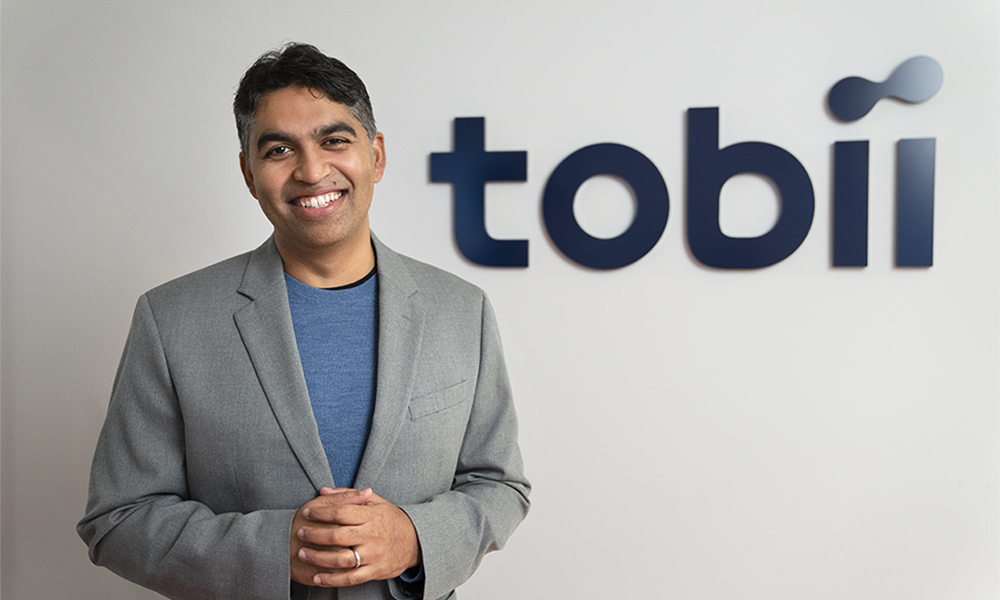Basketball is a collision-prone sport; concussions and head trauma are pervasive throughout the league.
During the 2021-2022 NBA season, 16 players missed a total of 51 games because they displayed concussion-like symptoms, according to Spotrac.
The NBA’s current concussion policy takes into account that every player has a unique health history and is addressed on a case-by-case basis.
As part of these evaluations, the league should more widely adopt advanced technology that improves the speed and accuracy of diagnosing and evaluating player readiness and head trauma.
The proliferation of these technologies should mean that all athletes, not just professionals, will enjoy sports while minimizing the risk and impact of bodily and brain injuries.
As professional sports leagues explore new methods to mitigate these impacts, eye tracking technology can play an important role in diagnosing and evaluating head trauma, in turn, making sports safer for every athlete.
Eye tracking technology is already trusted in clinical settings, with research proving its reliability and precision, making it dependable for regulatory groups to adopt.
According to a gaze tracking study, eye tracking technology can be accurate to a 0.9 degree margin of error, making it a valuable tool for doctors who need a precise tool to supplement their clinical judgment for difficult diagnoses.
This level of precision is important when providing data for professionals to make life-altering decisions about patients’ (in this case, athletes’) health, especially in the neurological space.
Eye tracking technology is also already used in the NBA.
Digital health platform Neurosync has partnered with Tobii to create an FDA-approved product that is used by the Washington Wizards, Atlanta Hawks, and Golden State Warriors to identify concussions and determine the proper rehabilitation programmes.
This technology, trusted by high-calibre teams, can be used to accurately pinpoint concussion-like behaviour for trained clinicians to interpret.
Eye tracking has achieved proven success in diagnosing neurocognitive medical conditions, such as schizophrenia, attention deficit hyperactivity disorder (ADHD), and Alzheimer’s disease, among many others.
ViewMind, a company specialising in products that analyse eye movement patterns, is using Tobii’s eye tracking technology to precisely diagnose neurocognitive disorders.
In a study using ViewMind’s technology, researchers were able to predict which individuals with mild cognitive impairment would develop Alzheimer’s with 94 per cent accuracy years in advance versus those that would develop other dementias.
REACT Neuro, another Tobii partner, is building a digital health platform democratising access to brain health from home using eye tracking to assess and rehabilitate brain functions in health and disease.
The company works with working with Boston Children’s Hospital to develop a system that would predict brain health conditions like Alzheimer’s before symptoms appear and treat conditions like concussion and stroke by using advanced virtual reality.
These research tools and platforms are supported by eye tracking technology and can be a trusted tool for sports regulatory bodies and teams when evaluating an athlete’s health and readiness.
Eye tracking has been adopted in these areas of study because it produces results quickly, provides a level of objectivity and is non-invasive, making it easy to use – something that’s especially important for injured athletes.
Similar to how a few seconds can make all the difference on the field, time can be of the essence for evaluating injuries.
Eye tracking headsets, such as NeuroSync’s, can generate results through a series of 60-second tests and be instantaneously ready for interpretation by a trained clinician.
Since eye tracking technology is responsible for producing results from these tests, it removes some of the subjectivity and inconsistency in outcomes.
For many professional leagues and teams, eye tracking technology is not new; however, the use case for player safety may be.
Beyond the clear health impacts this innovation could have for athletes, eye tracking is often used to help improve their technique and skill.
HeadVantage uses mini cameras alongside eye-tracking technology that can measure the diameter of the users’ pupils a hundred times per second, evaluate progress, and record the athlete’s practice.
These data help hone the athletes’ crafts, making them the best they can be on the field or court.
The Norwegian Premier League has also explored the gaze patterns of elite soccer players as they play.
Those results impacted their training and gave them skills to focus on developing in practice.
So, while eye tracking for the purpose of athletes’ well being is emerging, the technology is not as foreign to teams as it once was.
Sports regulatory bodies should consider innovative technologies using eye tracking to help health professionals accurately prevent and diagnose head trauma and related injuries.
After all, athletes should feel confident that they’ll get the highest possible standard of care while playing the incredibly physical sports they love.
Three professional NBA teams already rely on eye tracking technology to ensure the health of their players; now it’s time to implement it in a wider array of sports health technology.




